Running an online business in 2025 isn’t just about selling products — it’s about making the right decisions at the right time. But here’s the catch: without clear reporting, even the smartest entrepreneurs end up guessing. That’s where ecommerce analytics tools like Metorik and Putler come in.
Both tools promise to take the chaos of sales, customers, products, and payments, and turn it into insights you can actually act on. But which one really fits your business in today’s multi-platform, multi-payment world?
In this in-depth review, we’ll compare Metorik vs Putler across features, integrations, dashboards, pricing, and real-world use cases — so you can decide which tool will help you track smarter, grow faster, and stay ahead in 2025.
Why Reporting Is Important for Online Businesses?
As a business owner, you’re making decisions all the time- some small, some that can make or break your business.
Running an online store means decisions become a daily habit. But without solid reporting, you’re just guessing:
- Which products drive the most revenue?
- Who are your best customers?
- Where’s your traffic really coming from?
- Are your strategies paying off?
That’s why tools like Metorik and Putler exist—to cut through the noise, turn raw data into clarity, and help you take smarter, faster actions.
This article will give you a detailed breakdown of both these reporting tools and help you decide the one most effective for your business.
Metorik vs Putler: A Quick Overview
Before diving into the finer details, here’s a quick snapshot of both tools:
| Tool | Best For | Platform Support |
| Metorik | WooCommerce-only analytics | WooCommerce, Shopify |
| Putler | Multi-platform ecommerce businesses | WooCommerce, Shopify, PayPal, Stripe, BigCommerce, EDD, GA, more |
If you’re running a WooCommerce-only store, Metorik is great. But if you’re selling on multiple platforms and want a unified view, Putler is the better choice.
Will It Fit Your Setup? Integrations & Compatibility?
The most important requirement of any reporting tool is compatibility. It should be compatible with your business platform, the payment gateway used on it as well as the various services that go in tandem with your business.
For the sake of simplicity, I’ve divided this section into three sub-categories:
Shopping Cart Compatibility
Metorik supports only WooCommerce and recently added Shopify. If your store isn’t on these platforms, it won’t capture your data effectively. In-case, you have any stores built using another shopping cart system, you can’t use Metorik for it.
Coming to Putler, it integrates with a wider range of platforms and marketplaces
Some of the top ones being-
- WooCommerce
- Shopify
- Easy Digital Downloads(EDD)
- Bigcommerce
- Etsy
- Ebay
- Gumroad
- Amazon
Putler provides you analytics, reporting and insights no matter where you sell.
Payment Gateway Compatibility
Metorik doesn’t consider payment gateway as a separate data source. It will pull data from the payment gateway integrated with your WooCommerce store.
On the other hand, Putler integrates with payment gateways as a separate data source.
Putler is a crowd favourite among PayPal users, as it is 10 times faster when it comes to showing PayPal transactions. If your business deals with payments from multiple gateways, Putler could be a blessing for you.
Putler supports the following payment gateways:
- PayPal
- Stripe
- Authorize.net
- Braintree
Compatibility with Other Services
Not just shopping carts and payment gateways, both these plugins are integrated with many other services like-
Metorik integrates with :
- Google Analytics
- Slack
- Zendesk
- ShipStation
- Intercom
- HelpScout
- Groove
- Gorgias
Putler integrates with:
- Google Analytics
- MailChimp
- and offers an Inbound API for custom data feeds
To summarize, Metorik integrates more with marketing services. Putler has more integrations with payment gateways, shopping carts, marketplaces are other e-commerce platforms.
Note – Putler also has an Inbound API to help you connect any other platform and view in-depth reports for each.
Pricing Structure
When choosing a reporting tool, pricing often plays a big role—especially when your order volume starts to scale.
Metorik Pricing
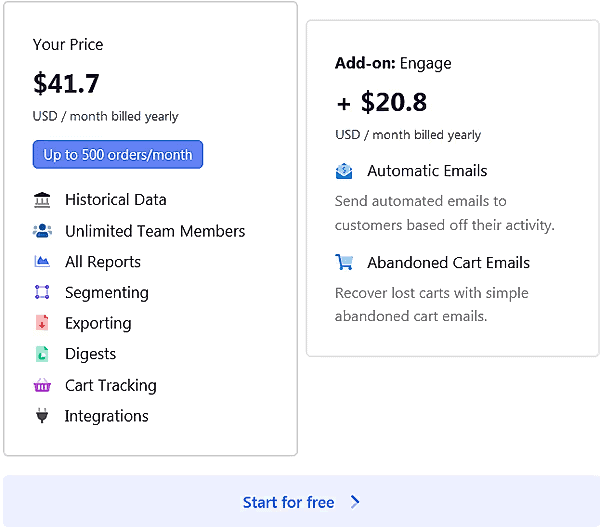
Metorik offers one subscription plan with all features included, and calculates your monthly cost using two key factors:
- Average monthly orders over your last 3 months
- Number of connected stores
Example: If your last three months had 450, 480, and 510 orders, your average is 480. That becomes your billing level for the month. Metorik adjusts this automatically every month, always keeping you at the lowest cost level that fits your data volume.
You can also add Metorik Engage email credits (optional) on top of your base plan if needed.
- Starts around $20–25/month for up to 100 orders (Starter level)
- Scales incrementally (e.g. 500 orders ≈ $50/month, 2,500 orders ≈ $100/month)
- Covers multiple stores under one subscription
Putler Pricing
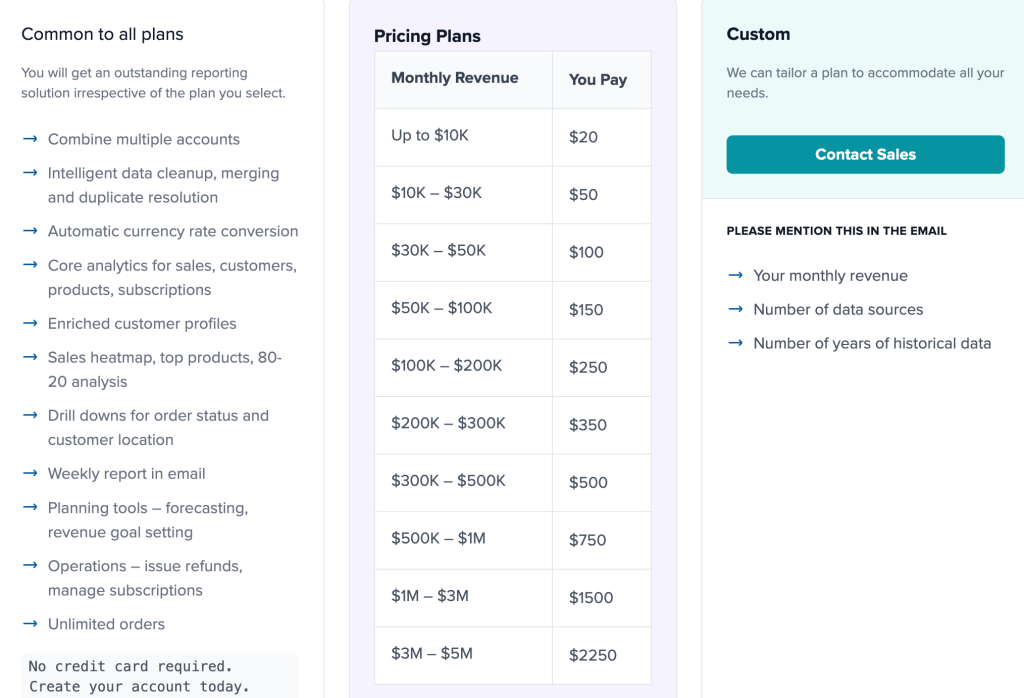
Putler uses a revenue-based pricing model that scales with your business. Instead of fixed tiers, your pricing is determined by how much revenue your business generates each month.
There are two main plans:
- Starter Plan – $20/month for businesses having revenue below $10K per month.
Perfect for small businesses or those just starting out. You get access to essential analytics, support for 3 platform connections, 2 years of historical data, and all features. - Growth Plan – Starts at $50/month for businesses that cross the $10K monthly revenue mark.
Perfect for growing businesses. You can add upto 15 data sources, get access to 5 years of historic data and use all features.
Analyzing Dashboards: How Insightful Are Metorik & Putler?
When it comes to reporting tools, a well-structured, easy-to-use dashboard makes all the difference. You’re not just tracking numbers—you’re making decisions that can shape your business. That’s why the next big factor to evaluate is how each tool presents your data.
A good dashboard should answer essential questions at a glance: What’s selling? Who’s buying? What’s trending? Where’s the money going?
Let’s see how Metorik and Putler handle this.
Home Dashboard
As Metorik is only for WooCommerce, the reports may seem similar to WooCommerce reports.
But in reality, they are quite detailed. Metorik provides details like the best and worst selling products, sales made per day, hourly sales, net sales, new customers, average order value/order items, average lifetime value/orders per customer, etc.
In short, Metorik has a sleek home dashboard that gives you some key information that can help make important decisions.
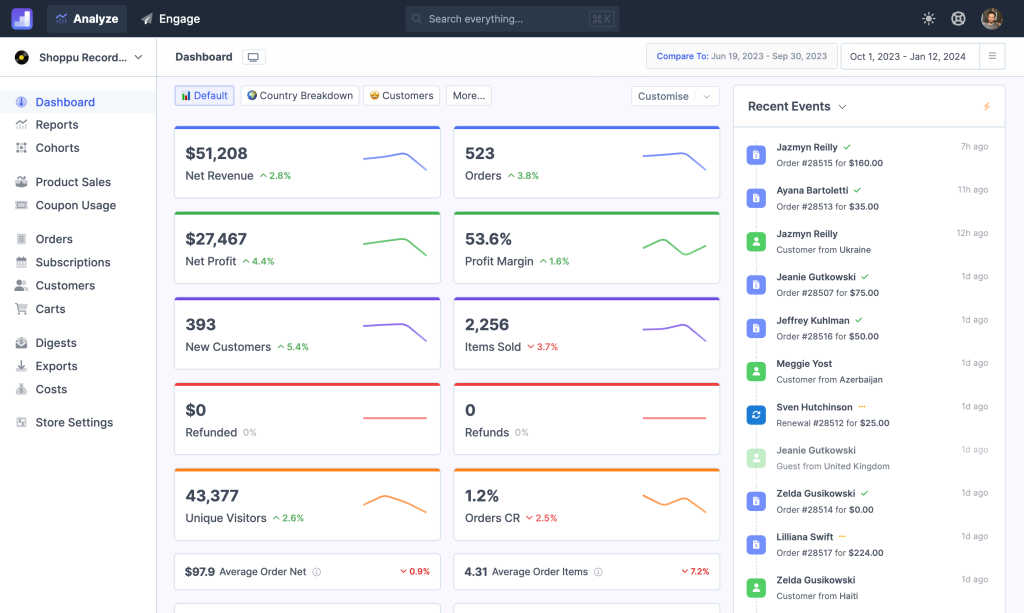
Putler’s home dashboard is more detailed and gives some key information right there. It shows a comprehensive view of your sales data, customer data, product data, subscription and refund data, transaction data and, most recently, also your Google Analytics data.
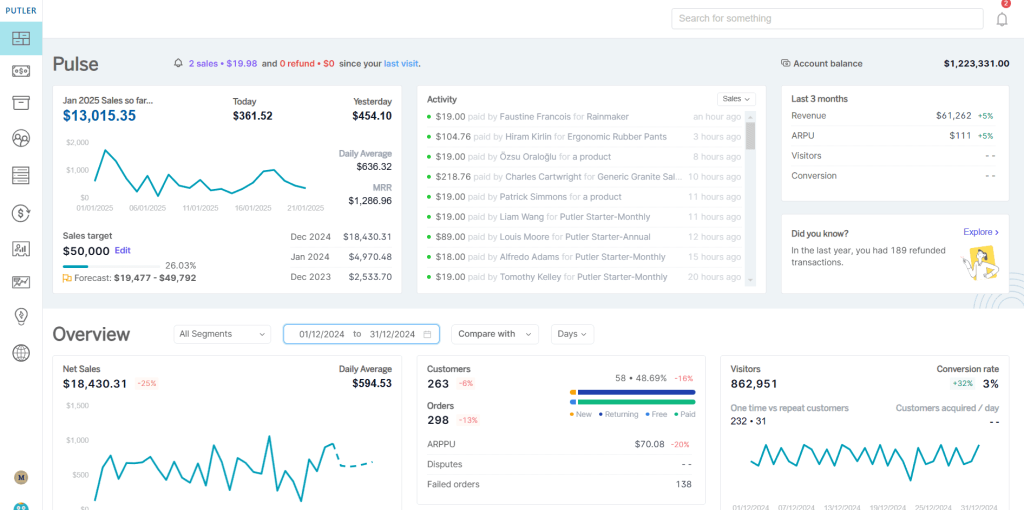
Digging deeper!
Products Dashboard
Both Metorik, as well as Putler, have separate pages for each product present in the store. These pages show all the necessary information related to the product such as the first sale date, last sale date, number of refunds, average sale per day, average price, monthly wise sales and so on…
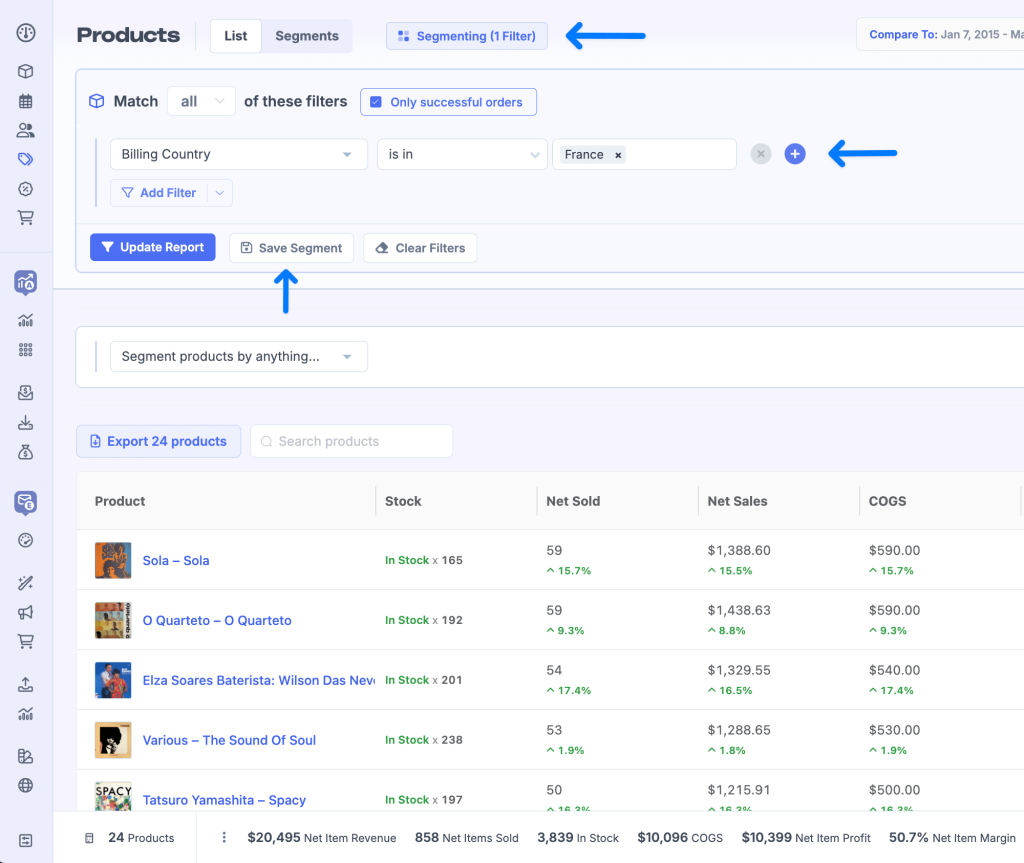
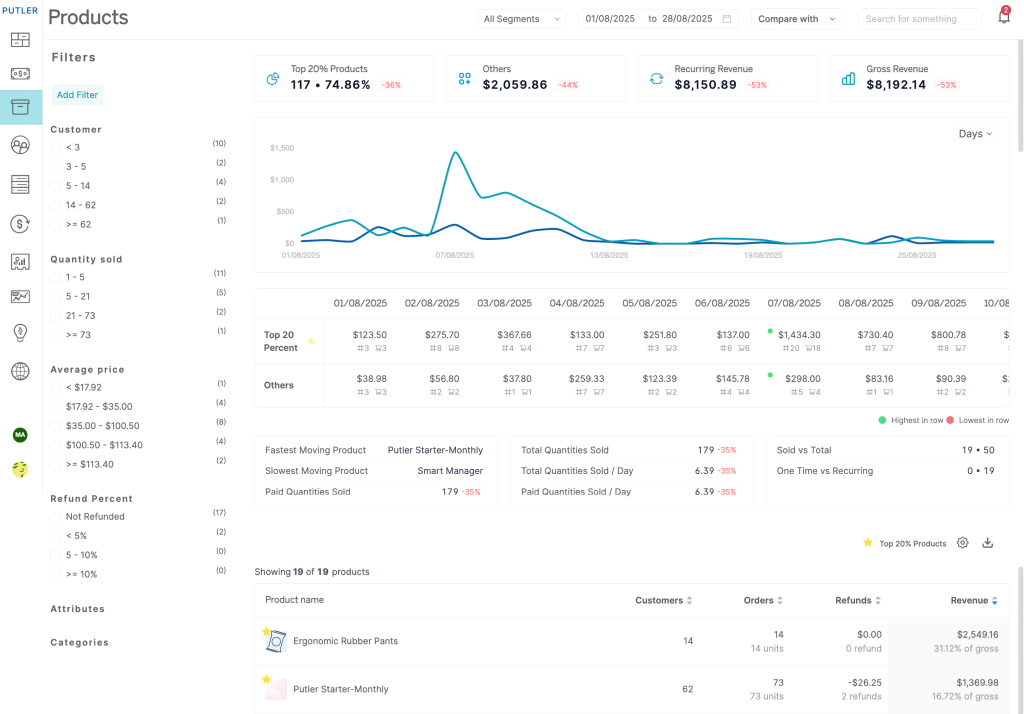
Customers Dashboard
Metorik has a detailed page for each customer where it gives different customer related information like name, email id, contact number, total amount spent, average order, number of orders and transactions.
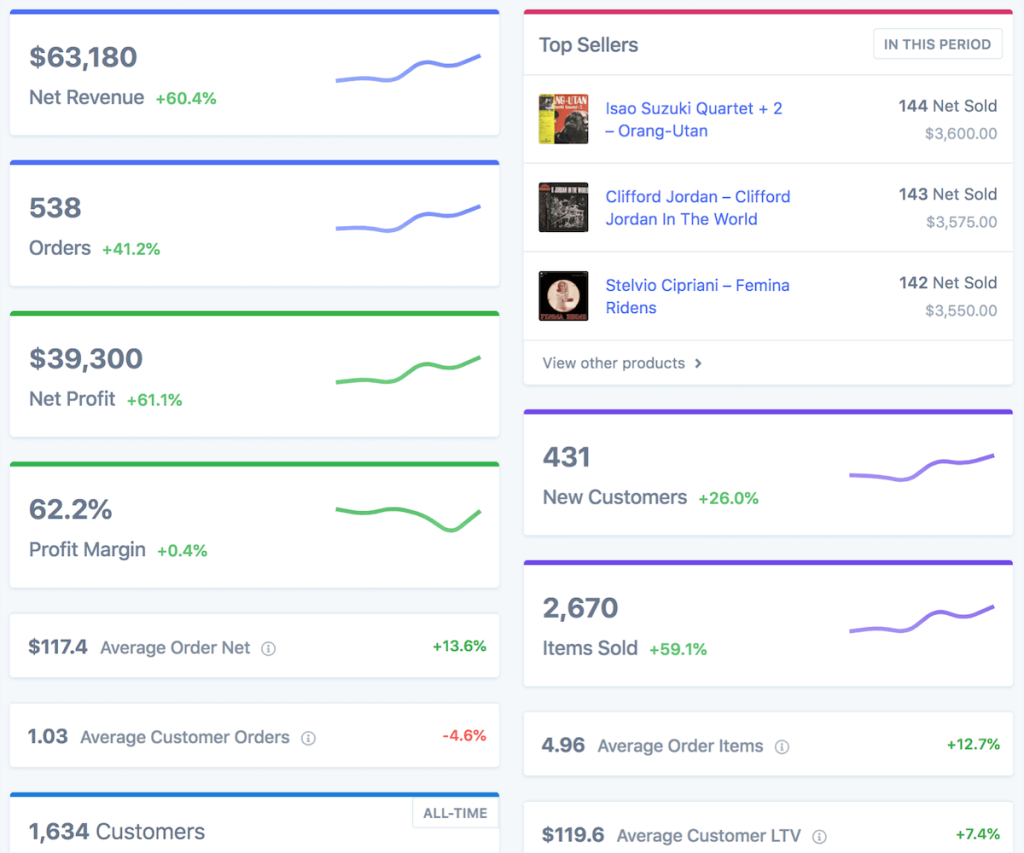
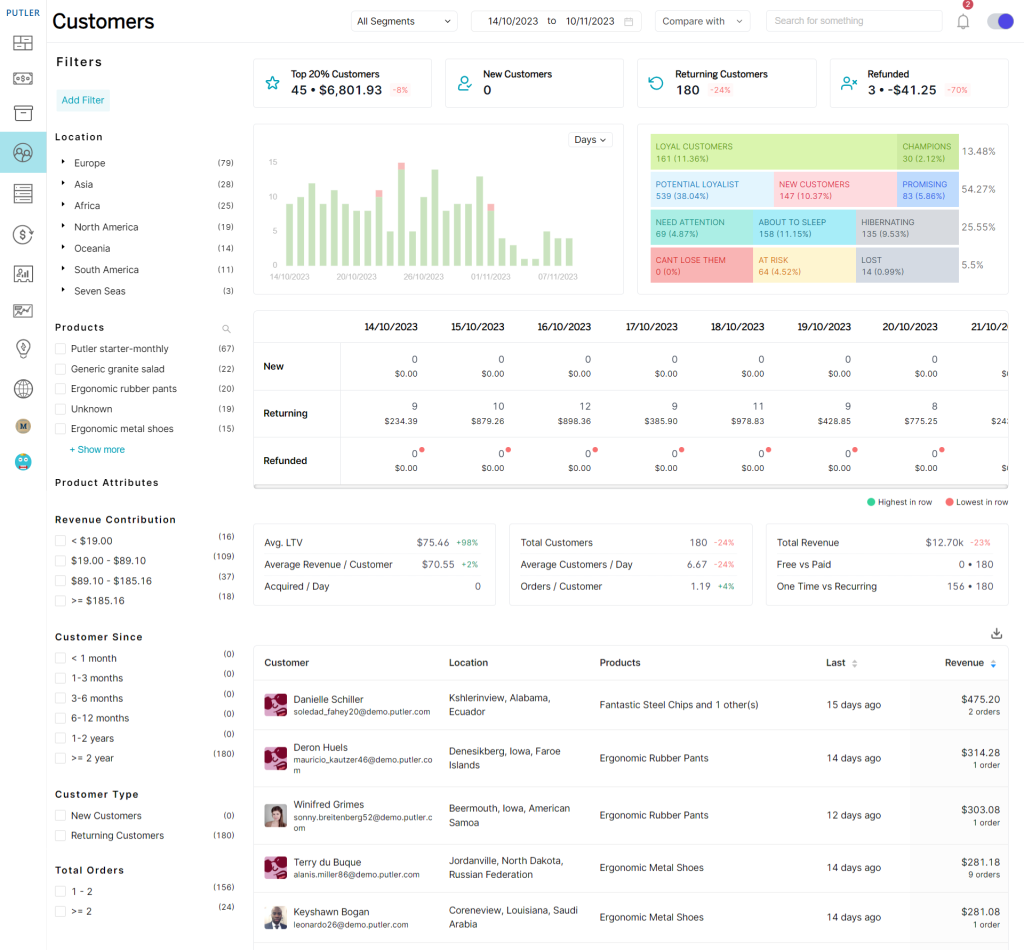
Putler shows all customer related key performance indicators (KPI’s) like lifetime value, average revenue per user (ARPU), churn rate, avg value/day, refund rate, conversion rate.
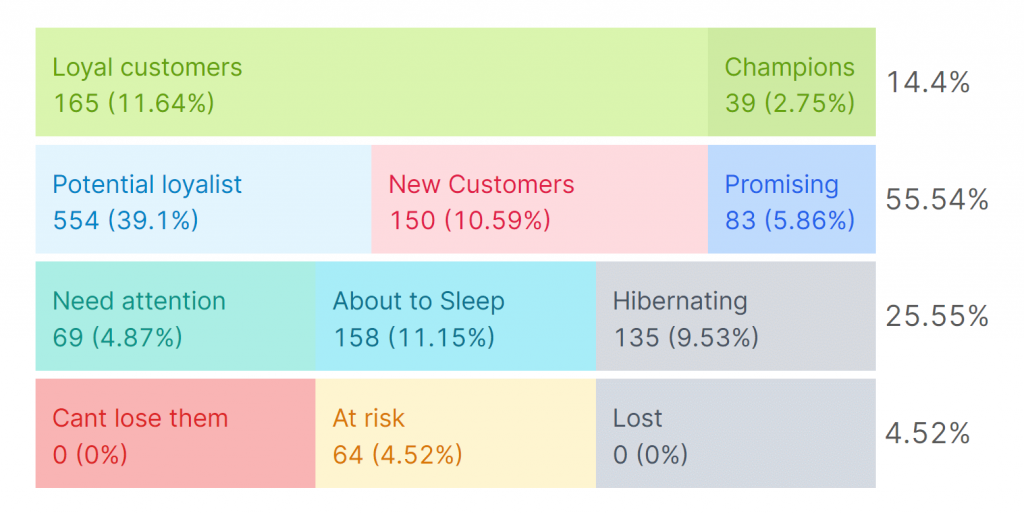
Putler also segments customers based on RFM – recency, frequency, monetary analysis. RFM categorizes customers into different clusters like loyal customers, hibernating customers, to potential customers, new customers and many others.
RFM analysis helps to target customers with special emails, offers, discounts, etc.
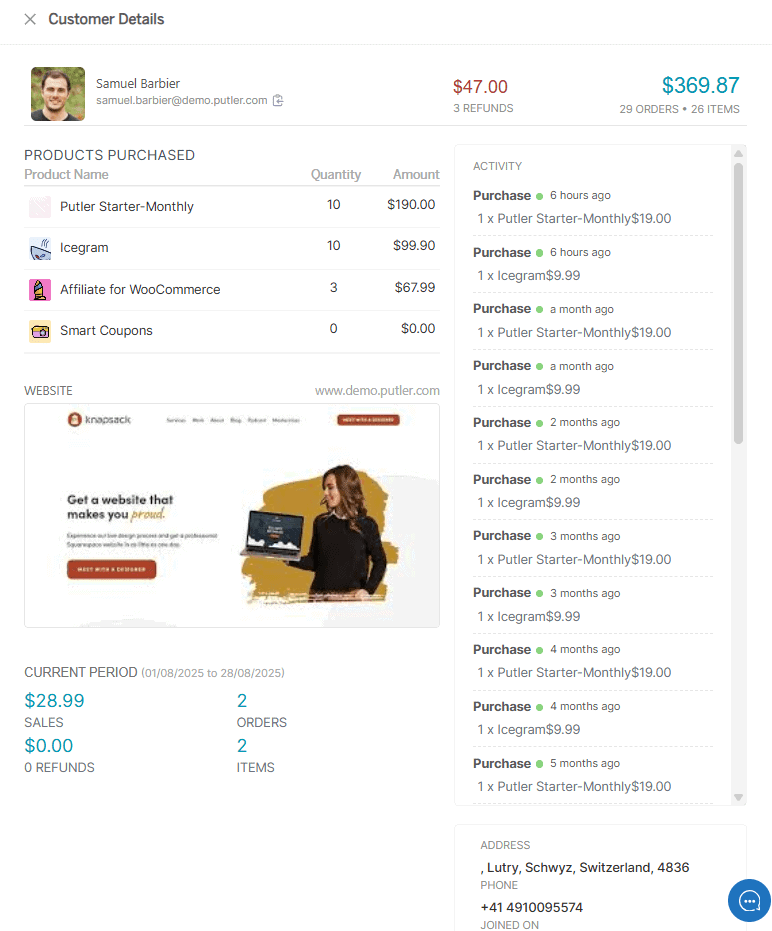
Putler also gives individual customer cards which provides you with the customer’s name, a display picture, the products he/she has purchased, their location, social media details, etc. It also shows a detailed view of every transaction made by the customer in your store.
Transactions Dashboard
This dashboard gives complete information on every transaction made by every customer. Putler also gives an option to issue refunds from the dashboard.
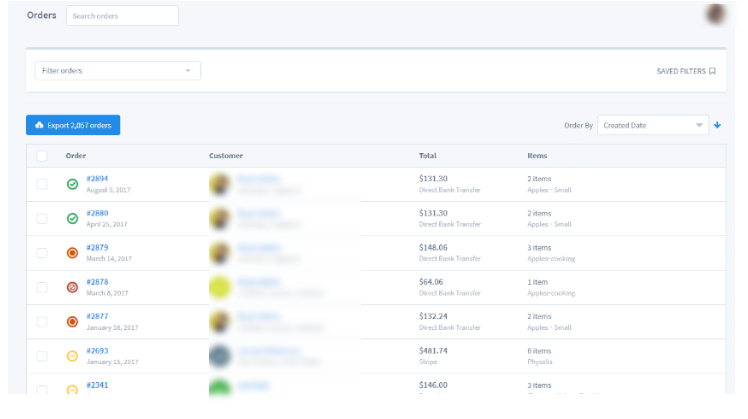
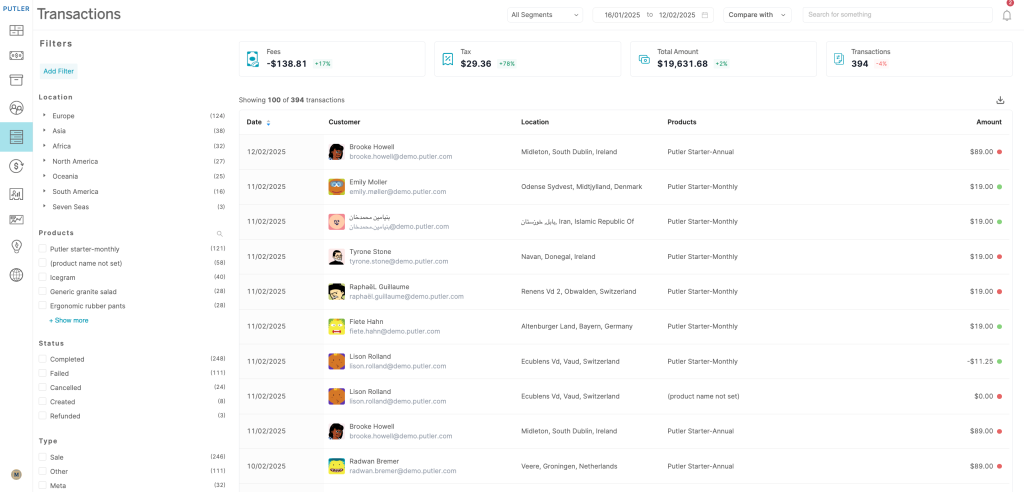
Subscriptions Dashboard
As I mentioned earlier, Putler is also integrated with WooCommerce subscription plugins. Thus it also pulls in data from WooCommerce subscription reports. So you can view all the subscription statistics within Putler itself.
Along with WooCommerce, Putler also supports subscriptions for PayPal & Stripe. Subscriptions reporting for Authorize.net and Braintree Subscriptions is on our roadmap.
Metorik supports only WooCommerce Subscriptions.
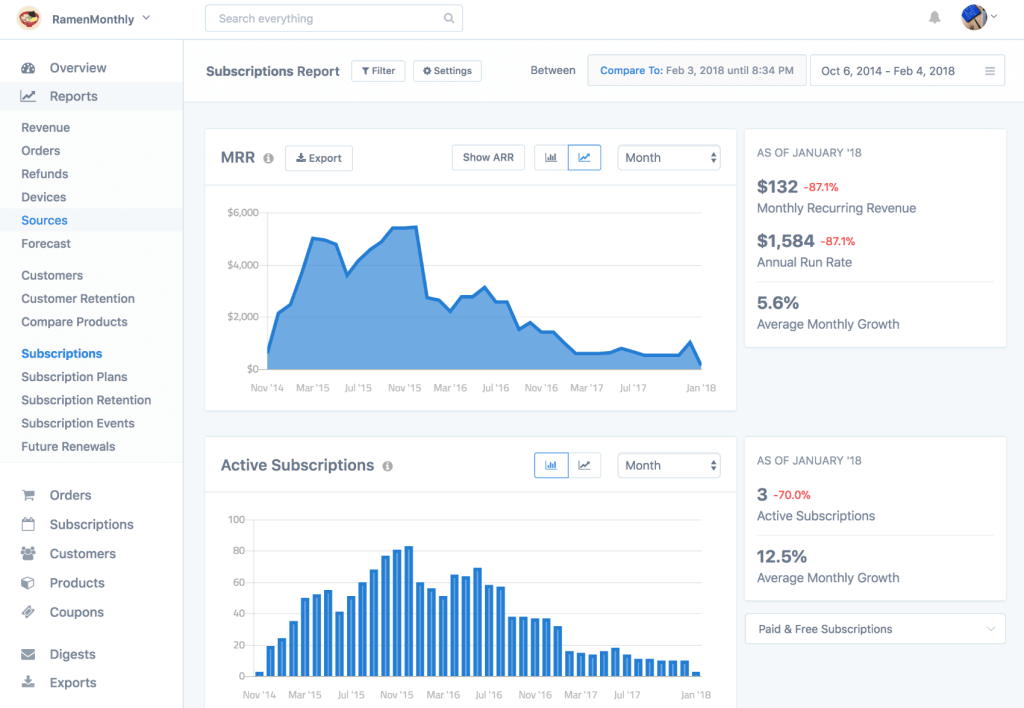
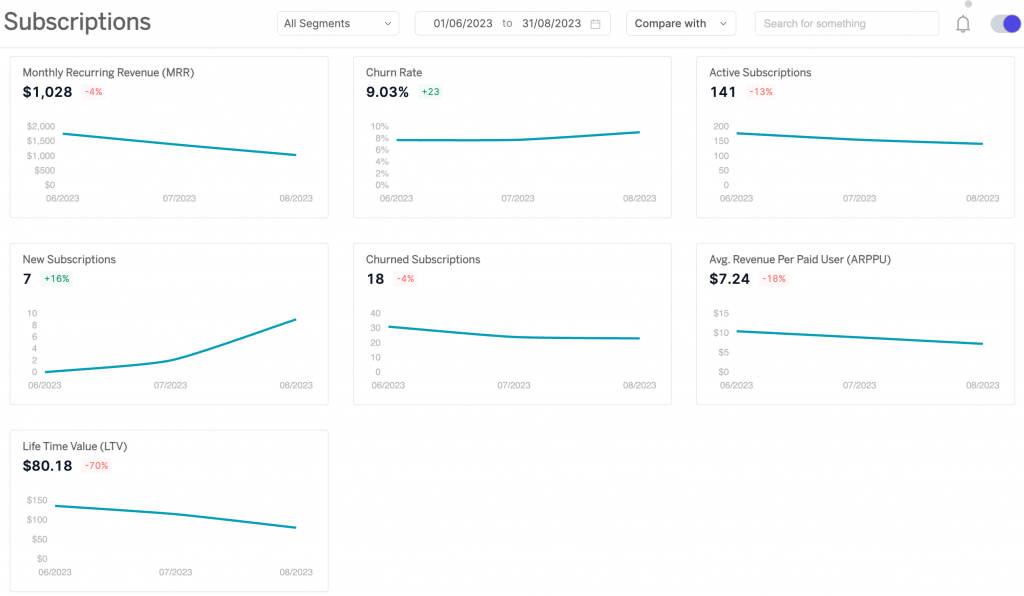
Website Analytics
Another interesting report that Putler provides — which Metorik doesn’t — is website analytics.
Putler lets you pull in website data in two powerful ways:
Audience Dashboard
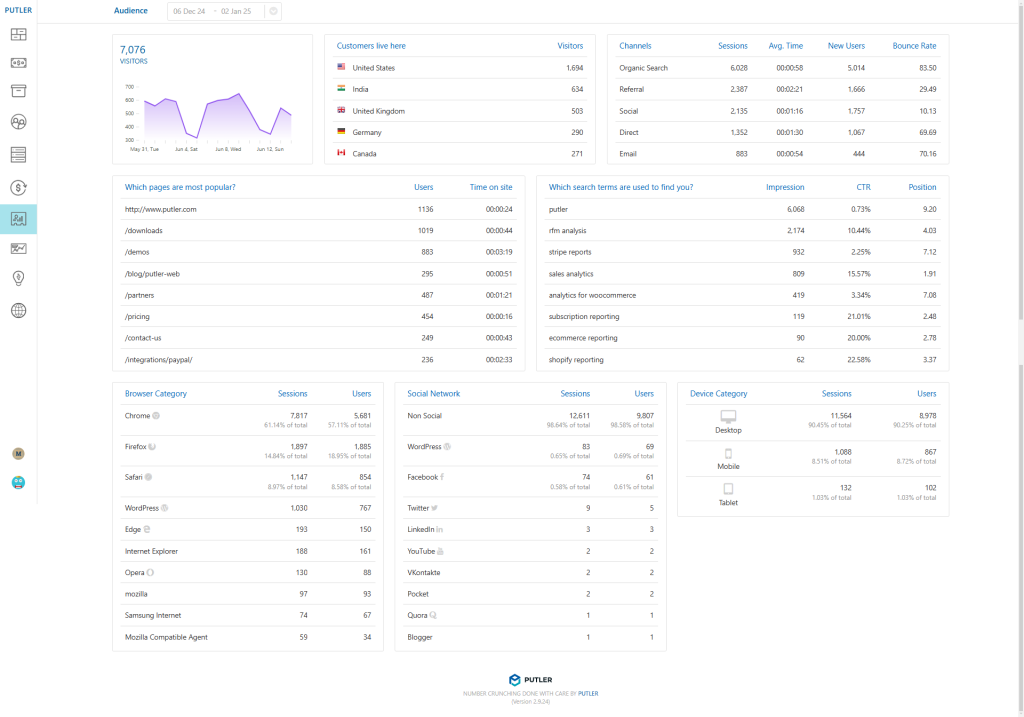
If you connect your Google Analytics account, Putler’s Audience Dashboard gives you a bird’s-eye view of your website performance. You can see:
- Total visitors & sessions
- Traffic distribution by country
- Top-performing pages
- Acquisition channels (organic, paid, referral, social, etc.)
- Search keywords driving traffic
This helps you understand not just what’s happening inside your store, but also how people are finding you and interacting with your site.
In-house Web Analytics
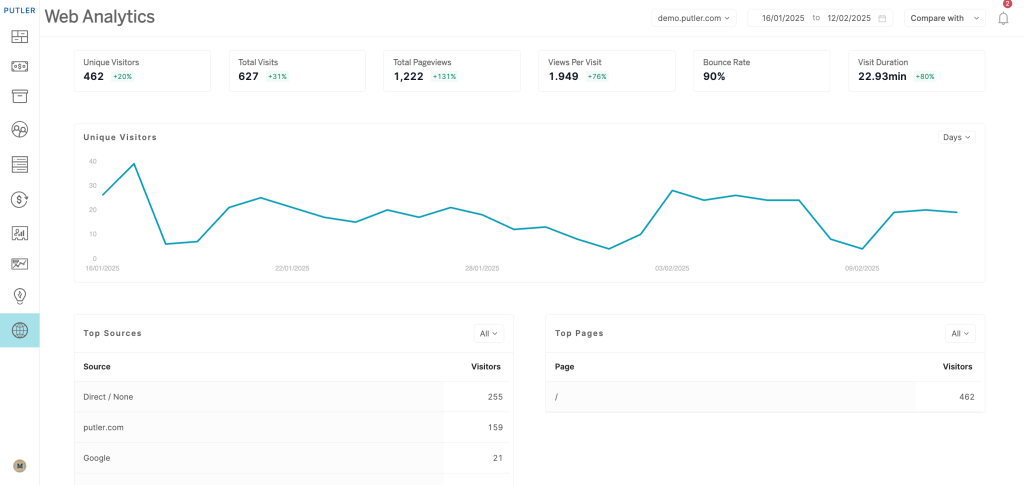
Don’t want to rely only on GA data? Putler also offers in-house web analytics. This means you can track visitor activity directly within Putler — without needing to log in elsewhere.
It gives you privacy-friendly insights about visitors, traffic sources, and behaviors right inside your reporting tool. Perfect if you want analytics that are simple, reliable, and independent of third-party tools.
Monitoring Key Performance Indicators
Both Metorik and Putler give you a wide range of KPI’s. Metorik provides you more store- related KPI’s like:
- Customer Lifetime Value
- Customer Lifetime Orders
- Customer Lifetime Items
- Customer Average Order Value
- Order Payment Methods
- Daily Customers Joined
- Daily Guest Orders
- Best Sellers
- Worst Sellers
- Customer Device Types
- Average Order Gross
- Average Order Net
- Average Order Items
- Best Customers
- Customer Browsers
- Refund Rate
- Refund % Of Gross Sales
- Average Refund Amount
- Conversion Rates
- Customer Operating Systems
On the other hand, Putler gives you all these plus even more KPI’s. It divides it’s KPI’s into 6 broad categories.
- Sales Metrics
- Transaction Metrics
- Subscription Metrics
- Product Metrics
- Customer Metrics
- Visitor Metrics
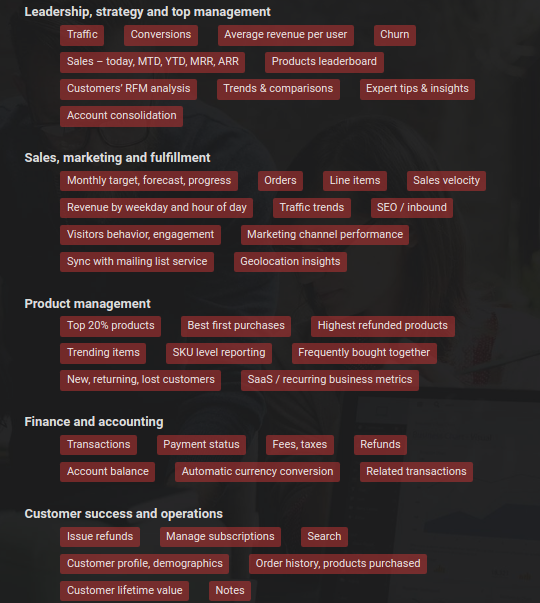
Working With Real-Time Data
Both these plugins understand that the most important need for businesses is the ability to work with real-time data. Thus, both this software provide you with real-time information.
Metorik has a ‘Recent Events’ widget which updates whenever a transaction is made on your WooCommerce store. Similarly, Putler also has ‘Recent Events’ as well as a Transactions dashboard which updates itself whenever a transaction takes place.
Both these tools allow you to drill down and gain in-depth view of every transaction. You can retrieve information like the customer’s profile, check the products purchased, change payment status, add notes etc.
Carrying out refunds and subscriptions
Getting up-to-date data about your business within your reporting, and analytics tool is hugely important. Now, imagine if you could also carry out important tasks like refunds and managing subscriptions within it. That sounds pretty useful, doesn’t it?
Unfortunately, Metorik doesn’t let you carryout such tasks but Putler does.
Putler allows you to carry out either partial or full refunds right within the Putler’s dashboard.
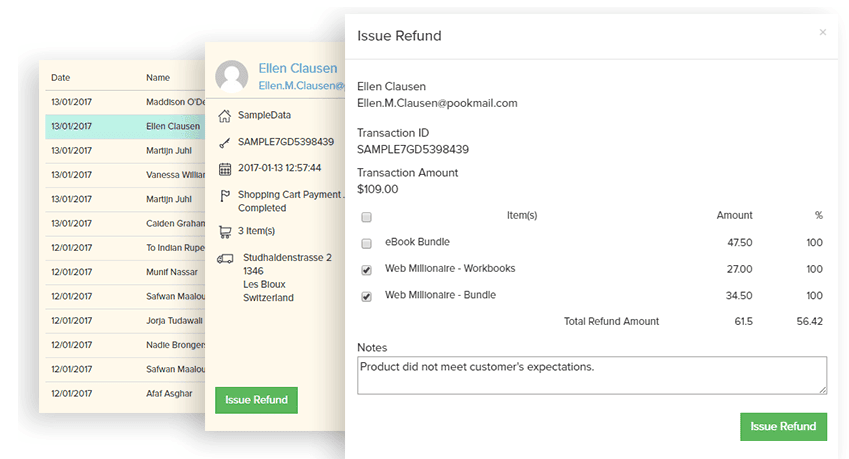
You don’t need to log in to your payment gateway. Once you’ve connected your payment accounts to Putler, you can view as well as work on data right from Putler’s dashboard. Like manage subscriptions, process refunds etc.
Viewing charts & comparisons
Graphs and charts both are an integral part of reporting. They allow you to quickly recognize trends and derive important conclusions instantly.
Both Metorik and Putler allow you to instantly compare data across different periods.
Gaining invaluable insights
As you’ve probably gathered from this article, both Metorik and Putler give you insights.
The plus point of Metorik is that it lets you define how often you get these reports. It summarizes your store’s activity and lets you choose the time and channel (email, slack, SMS) for receiving your data.
Putler sends you reports and insights only via email. And these reports are sent weekly. Like Metorik, there’s no fixed schedule or way to choose the frequency of these reports.
The Big Question: Which Tool Should You Choose & Why?
Comparing Metorik vs Putler is a bit like comparing apples to oranges — both are excellent, but they serve different kinds of businesses.
If you run a single WooCommerce or Shopify store and want deep, store-specific insights with built-in tools like email automations and cart recovery, Metorik is a solid choice.
But if your business is more complex — for example, you manage multiple stores, multiple payment gateways, or even sell across platforms like Amazon, eBay, Etsy, or Gumroad — then Putler is designed for you. It pulls all your data into one place, offers richer KPIs, and gives you aggregated as well as individual reports.
At the end of the day, it comes down to where your business is today and where it’s headed. Metorik shines for WooCommerce-focused sellers. Putler delivers more flexibility and future-proof reporting for multi-platform businesses.
So if you’re looking for a Metorik alternative or simply want an ecommerce reporting tool that scales with you, Putler gives better long-term value.
How does Putler compare with other analytical tools?
| Features | Putler | ChartMogul | Baremetrics | Metorik |
|---|---|---|---|---|
| SaaS Metrics | Yes | Yes | Yes | Yes |
| Non SaaS Metrics | Yes | Yes | No | Yes |
| Website metrics | Yes | Yes | No | Yes |
| Number of Integrations | 17+ direct | 49+ official apps + Zapier automations | 10 native integrations | 10 native integrations |
| Integrates with PayPal | Yes | Yes | No | Yes |
| Team sharing available | Yes | Yes | No | Yes |
| Realtime updates | Yes | Yes | Yes | Yes |
| Multi-currency support | Yes | Yes | Yes | Yes |
| Aggregated reports | Yes | No | No | No |
| Individual reports | Yes | Yes | Yes | Yes |
| Customer Segmentation (RFM) | Yes | Yes | No | No |
| Subscription Management | Yes | Yes | Yes | Yes |
| Process refunds | Yes | Yes | Yes | Yes |
| Desktop App | Yes | No | No | No |
| Chrome extension | yes | No | No | No |
| Intuitive Search | Yes | Yes | Yes | Yes |
| Pricing | $20 | $100 | $50 | $50 |
The Final choice
Both Metorik and Putler give you strong dashboards, but they serve slightly different purposes:
Metorik is ideal if you run a single WooCommerce or Shopify store and want detailed, clean, real-time insights focused on that store.
Putler is better suited for businesses selling on multiple platforms and looking for a centralized command center for business, customer, product, and audience insights.
Choose the one that matches the complexity of your business—and your vision for growth.
FAQs
Q1. Does Metorik work with both WooCommerce and Shopify?
Yes. Metorik integrates with both WooCommerce and Shopify. It was originally designed for WooCommerce but now offers full support for Shopify as well, allowing you to manage reports, subscriptions, customers, and multiple stores in one place.
Q2. Is Metorik free to use?
No, Metorik is a paid analytics and reporting tool. Pricing is based on your store’s monthly orders, and plans start at $25/month. You can also try it with a free trial before committing.
Q3. What are the main alternatives to Metorik?
Some popular alternatives to Metorik include Putler, Baremetrics, ChartMogul, and Google Analytics. Among these, Putler stands out since it integrates with multiple platforms and payment gateways (not just WooCommerce or Shopify), making it more versatile for businesses with multi-channel sales.
